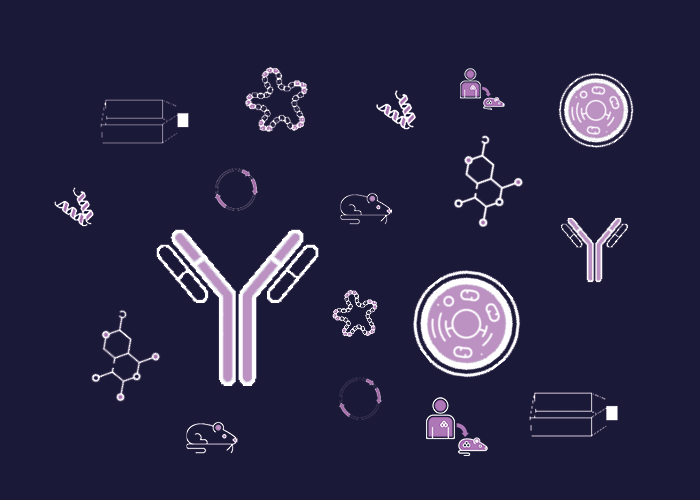
Cat. #153932
Anti-Gamma-ECS [11H7.C1.A2]
Cat. #: 153932
Unit size: 100 ug
Availability: 10-12 weeks
Target: Gamma-Glutamylcysteine Synthetase
Class: Monoclonal
Application: ELISA ; IF ; WB
Reactivity: E.coli ; Plant ; Saccharomyces
Host: Mouse
£300.00
This fee is applicable only for non-profit organisations. If you are a for-profit organisation or a researcher working on commercially-sponsored academic research, you will need to contact our licensing team for a commercial use license.
Contributor
Inventor: Richard Meager
Institute: University of Georgia
Tool Details
*FOR RESEARCH USE ONLY (for other uses, please contact the licensing team)
- Name: Anti-Gamma-ECS [11H7.C1.A2]
- Alternate name: ?-ECS
- Research fields: Cell signaling and signal transduction
- Class: Monoclonal
- Conjugation: Unconjugated
- Reactivity: E.coli ; Plant ; Saccharomyces
- Host: Mouse
- Application: ELISA ; IF ; WB
- Description: Together with glutathione synthetase and phytochelatin synthetase, gamma-glutamyl Cys sythetase (ÄÂ?-ECS) is an enzyme involved in, and required for, synthesizing phytochelatins (PC). ÄÂ?-ECS is involved in the biosynthesis of Glutathione. PC are multidentate ligands that are able to form chelates with thio-reactive, ÄËĂÂĂÂsoftÄËĂÂĂÂ metal cations such as Cd2+, Hg2+, and at least one oxoanion (AsO33-). In certain plants, deficiency of such enzymes leads to low tolerance to metal contamination while mutants over-expressing them are highly tolerant to metal contamination and may be used in phyto-remediation of heavy metals.
- Immunogen: Synthetic peptide
- Isotype: IgG2a
Target Details
- Target: Gamma-Glutamylcysteine Synthetase
- Target background: Together with glutathione synthetase and phytochelatin synthetase, gamma-glutamyl Cys sythetase (ÄÂ?-ECS) is an enzyme involved in, and required for, synthesizing phytochelatins (PC). ÄÂ?-ECS is involved in the biosynthesis of Glutathione. PC are multidentate ligands that are able to form chelates with thio-reactive, ÄËĂÂĂÂsoftÄËĂÂĂÂ metal cations such as Cd2+, Hg2+, and at least one oxoanion (AsO33-). In certain plants, deficiency of such enzymes leads to low tolerance to metal contamination while mutants over-expressing them are highly tolerant to metal contamination and may be used in phyto-remediation of heavy metals.
Applications
- Application: ELISA ; IF ; WB
Handling
- Format: Liquid
- Unit size: 100 ug
- Shipping conditions: Dry ice
References
- LeBlanc et al. 2011. Int J Phytoremediation. 13(7):657-73. PMID: 21972493.
- Enhanced arsenic tolerance of transgenic eastern cottonwood plants expressing gamma-glutamylcysteine synthetase.
- Li et al. 2005. Environ Toxicol Chem. 24(6):1376-86. PMID: 16117113.
- Arsenic and mercury tolerance and cadmium sensitivity in Arabidopsis plants expressing bacterial gamma-glutamylcysteine synthetase.
- Dhankher et al. 2002. Nat Biotechnol. 20(11):1140-5. PMID: 12368812.
- Engineering tolerance and hyperaccumulation of arsenic in plants by combining arsenate reductase and gamma-glutamylcysteine synthetase expression.
- Li et al. 2001. Plant Physiol. 127(3):711-9. PMID: 11706154.
- Rapid isolation of monoclonal antibodies. Monitoring enzymes in the phytochelatin synthesis pathway.


